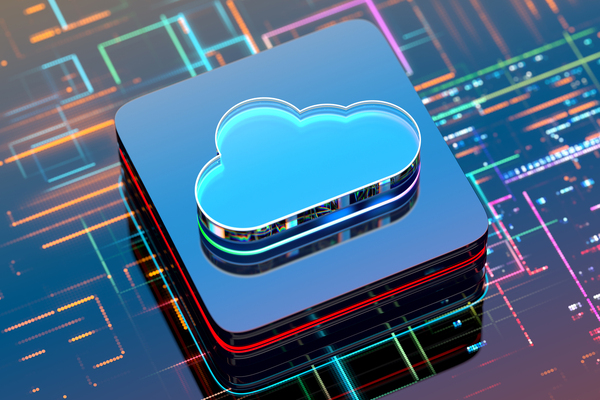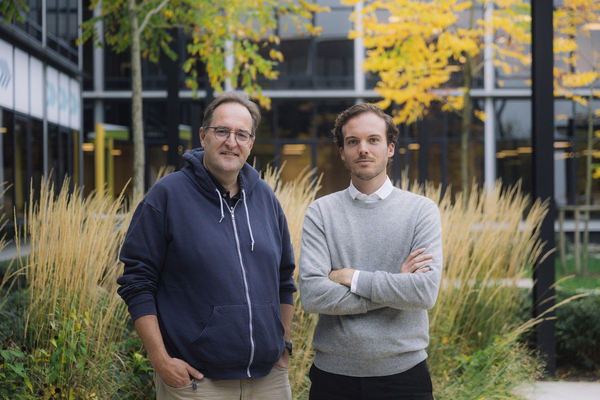The today and tomorrow of digital asset management

In today’s fast-paced digital landscape, organisations are grappling with ever-increasing volumes of content, including photos, videos, blueprints, graphical elements and more. Managing these assets efficiently is a challenge, with modern organisations demanding robust, centralised and intelligent solutions.
This is where digital asset management (DAM) comes into play. In recent years, DAM systems have evolved from simple image repositories to powerful content orchestration hubs. The backbone of many content-driven businesses, DAMs streamline workflows, protect intellectual property, enhance data governance and enable speed and adaptability.
Introducing digital asset management
At its core, a DAM system provides a highly usable centralised platform to store and manage files and data, ensuring that every content item is accessible, accurate and current. However, modern DAMs are not just storage solutions. They enable businesses to build hierarchical content structures that are under the control of authorised employees across the organisation.
“The DAM market is becoming increasingly relevant, given the explosion of rich content and metadata, as well as the growing complexity and demand for speed when working with content. This is reflected in DAM technology, which has evolved from simple image banks for single teams to a fully integrated content orchestration hubs that serve entire organisations.” Radmila Stoltz, Chief Commercial Officer, Fotoware
Today’s DAM systems also support content delivery across multiple channels, including websites, retail displays and printed media. This content can be synchronised because DAMs automate publishing across these different channels. They ensure that the appropriate version of an image is automatically selected for publication, with approvals, tagging and quality requirements – such as licensing requirements and expiry dates – built into the workflows. Many such mundane tasks are simplified with metadata-driven automations, and granular access control ensures effective content collaboration.
Ensuring a single source of truth with controlled vocabularies
Perhaps the most transformative role of a modern DAM is its ability to serve as a single source of truth across an organisation and its stakeholders. Its centralised position within the organisation means everyone is working from the same up-to-date assets and data. Marketing teams and their agencies use it for content management and distribution, always maintaining brand consistency and control; HR manage employee assets in compliance with GDPR; archivists and registrars keep track of massive art collections, licensing and data records; and creative teams and communications can effectively collaborate on projects.
All of this can be achieved within the same ecosystem. And because DAMs have cross-organisational benefits, they should be treated as fully integrated content platforms that can be accessed by the entire business, rather than tools confined to smaller teams. When implemented in this way, a DAM becomes an engine of efficiency and quality, with benefits that extend throughout the organisation.
“As the amount of content grows, so does the risk of files being used or referenced incorrectly. But with a well-structured DAM at its centre, your technical ecosystem stays up to date, with a single source of truth throughout. By supporting advanced metadata structures and enabling customised automations, DAM systems help ensure a controlled vocabulary for your files, which is particularly useful for those handling vast collections.” Radmila Stoltz, Chief Commercial Officer, Fotoware
Most DAM platforms offer essential asset governance features for modern enterprises, including licensing and rights management functions, data quality management, support for GDPR compliance, and access controls.
However, they also offer considerable support with advanced data handling. The need for highly controlled vocabularies and master data management (MDM) capabilities is continuously increasing, and support for these is now often built into the DAM. MDM ensures that everyone works with the same, up-to-date information. Having an effective solution for MDM helps avoid problems such as duplicated data, outdated information and confusion over who can access what.
This is particularly useful for businesses that require automated data publication. A DAM that includes MDM functionality brings order to networks that contain large volumes of files and data in multiple formats, ensuring that stored knowledge is managed effectively and securely.
Automation with speed and precision

Modern operational DAMs also offer a high level of flexibility. Leading platforms such as Fotoware are built on adaptable system architectures that can scale with a business’s needs. Workflow automation is a standout benefit of this flexibility. Organisations can build custom workflows for automated ingestion, collaboration, approval and publication. These workflows ensure that the right people are involved at the right times, that version and quality control are maintained, and that only approved content is moved forward.
“Every organisation’s need is unique – from law enforcement wanting to automate the distribution of evidence in the form of CCTV recordings, to manufacturing wanting to reduce the cost of imagery creation and distribution. Fotoware aims to be the centralised orchestration hub to build any workflow to support your core business needs, with flexibility and precision in mind.” Radmila Stoltz, Chief Commercial Officer, Fotoware
Another benefit is found in automated workflows: powerful tools can distribute thousands of images to the right channel and at the right time without requiring a single click. In addition, users can see relationships between assets that might otherwise go unnoticed, encouraging smarter reuse of existing content. And the editing tools built into many advanced DAMs enable users to crop, adjust or group files without needing to manually download them or create duplicates.
Integration capabilities also ensure that the DAM fits smoothly into an organisation’s wider technology stack. Whether it’s a design suite, analytics platform or publishing system, modern DAMs can communicate seamlessly with other tools to streamline workflows and reduce friction.
A critical component for content authentication
As more content is generated and altered by AI-driven tools, DAMs become central to authenticating visual content items, using metadata and audit trails to track changes, and effectively watermarking images upon publication, in accordance with regulations such as the EU AI Act, which requires labelling of AI-modified content from August 2026.
“We’re already witnessing an increased need for advanced content workflows because of AI-generated or -modified content, and we expect this to grow in the years to come. While AI can be a helpful tool, it comes with multiple challenges, and many organisations look to DAMs to help them ensure transparency and regulatory compliance. The demand for powerful image rights management, consent management and built-in tools that support content authenticity will most likely increase.” Radmila Stoltz, Chief Commercial Officer, Fotoware
DAMs can facilitate content authentication by tracking IP rights and licences, managing editing permissions and offering audit trails that provide visibility into how, when and by whom an asset has been edited. In time, we expect to see tampering detection ensuring the integrity of visual material, an essential safeguard in an era of manipulated and synthetic media.
From tactical media management to strategic content operations
DAMs are shifting from departmental tools to enterprise-wide platforms that drive efficiency, compliance and innovation. They offer not only storage but also data governance, flexibility, content automation and security, providing measurable gains in productivity and risk reduction.
“The future of DAM is completely integrated, acting as the nervous system for all content: Imagine a retail brand automatically publishing images to e-commerce and advertising sites, without relying on silos and manual tasks; hospitals ensuring that all documentation is securely grouped and linked to a patient’s file, always available to the right people, and only the right people; energy companies automatically updating digital twins with the newest footage from on-site robots; or media companies ensuring that no matter where their visuals are portrayed, they’re able to efficiently track their lifecycle back to the original file. These are only a few examples of how we envision DAM to function within the technological landscape in the coming years – focusing on connectivity with other tools, content authenticity and customised automations.” Radmila Stoltz, Chief Commercial Officer, Fotoware
As content volumes continue to rise and the challenges of misinformation and digital complexity grow, the role of DAMs will only become more pivotal. Vendors such as Fotoware are leading the way, offering businesses the tools to manage their assets with clarity, control and confidence. The next chapter in content management will be written not in chaotic folders or disconnected systems, but in the intelligent, connected world of digital asset management.
Looking to accelerate your content workflows?
No matter the industry, content and data are key components for business excellence, and the need for a robust and interconnected technical ecosystem is ever-increasing. At its core, you’ll find a DAM solution: the hub for all important content items and their associated data, from which they’re securely managed and distributed.
You can read more about DAM at fotoware.com or download the comprehensive DAM buyer’s guide to discover what you should look out for when investing in a new solution for your digital assets.
Written by Jeremy Swinfen Green in collaboration with Fotoware

Business Reporter Team
You may also like
Most Viewed
Winston House, 3rd Floor, Units 306-309, 2-4 Dollis Park, London, N3 1HF
23-29 Hendon Lane, London, N3 1RT
020 8349 4363
© 2025, Lyonsdown Limited. Business Reporter® is a registered trademark of Lyonsdown Ltd. VAT registration number: 830519543






